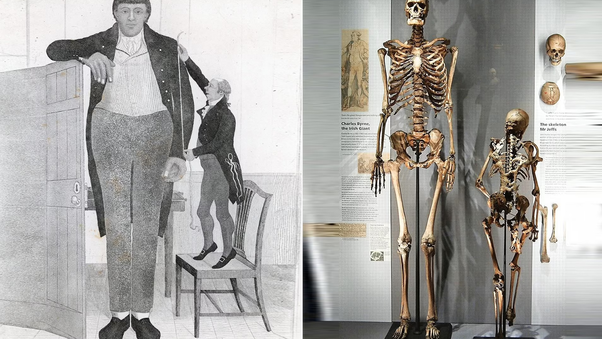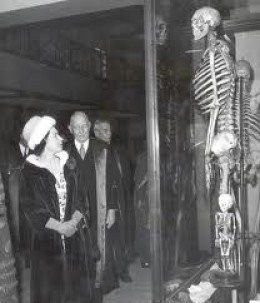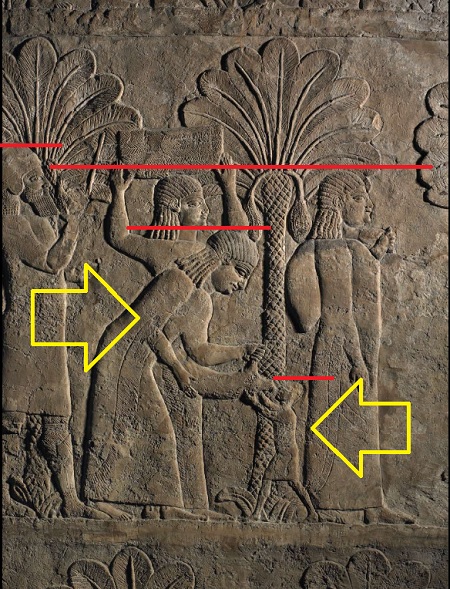I have always been fascinated by the stories of giants, the giant in Jack and the Beanstalk, the giant lantern genie in the tales of the Thousand and One Nights, the giant robots in science fiction films… They are mighty beings, we love to see and hear their stories because they emit in our souls a mixture of strength, vanity and mystery, and who does not love to be strong? And strength is often characterized by vanity, an acceptable vanity when you are the length of a three-story building, because whether you like it or not, you are compelled to look arrogantly at those little ones who run under your feet. And this arrogance, full of mighty power, is also the source of the mystery surrounding these giants, because it makes us wonder how they reached their size? How did they come into existence and how did they live? .. And the most important question is why did they disappear? And did they ever exist, or did they never exist except in the world of myths and legends?

Do we know everything?
Of course, if you asked a historian or biologist about the giant sitting on top of the gigantic beanstalk that grew in Jack’s garden, he would laugh and he would answer you confidently: “There are no giants.”
but how ? .. What about all that folklore and religious heritage about them, how can they not exist? .. You will inevitably ask, and he will answer you, saying: “Ok, if they existed, where are their remains? .. Their traces.. Their cities.. We know that dinosaurs are giant creatures that actually lived on Earth millions of years ago because we have thousands of fossilized skeletons that indicate their existence , while we did not find a single skeleton belonging to a giant.”
Scientific speech is sound, but let us ask innocently: Do scientists know everything? ..
They tell us that modern human appeared and colonized this earth about two hundred thousand years ago, but what do we know about these thousands of years? …almost nothing! .. Most of our knowledge of human history is almost limited to the last five thousand years, and let us be more specific, since man learned to write and left us records of his life, beliefs, kings, wars and cities. Writing is the standard of knowledge, and for this reason, scholars know a lot about aspects of ancient life in the Ancient egypt and Mesopotamia, because the peoples who founded those two civilizations left us millions of hieroglyphic papyrus scrolls and cuneiform clay tablets to the extent that many of them are still in the museums vaults arount the world, waiting to be deciphered and read.. But what do we know in return about Britain’s history before the Roman invasion in 43 AD? ..
almost nothing..
Is this reasonable! Great Britain, “The empire on which the sun never sets”… Its ancient history is unknown?

Yes, this is true, and the reason is simply that the ancient “British” were not fond of writing and reading and did not know it at all. They were barbarians, they did not leave us any information about themselves, and for this reason scholars today stand puzzled in front of a great historical monument like Stonehenge without knowing anything about Who built it and why was it built in the first place? All they have are conflicting historical accounts left by medieval historians that scholars refuse to believe, such as that the famous magician Merlin brought a people of giants who inhabited Ireland in ancient times and used them to move the huge rocks and build this majestic edifice.

A legend that’s hard to believe, isn’t it? .. But if these are just myths, how can we explain the construction of great edifices such as Stonehenge and the pyramids by using simple and dilapidated wooden levers and cranes? Doesn’t that seem impossible? .

In Baalbek, Lebanon, there is a great boulder carved out of stone called (The Pregnant Woman). This rock was cut from the stone quarries in the south of the city and carefully polished its sides. It is 21 meters long and weighs about 1500 tons. It is a giant rock in every sense of the word, but its size is not the only cause of mystery in it. Scientists do not know who cut it and how he was able to move it from its place and transport it for a long distance. It is supposed that it was prepared to be part of the luxurious temples built by the Romans throughout the city, but scholars today believe that its age dates back to an era older than that, perhaps in the time of Alexander the Great. The problem here is that they do not know who was living in the city at the time, because Baalbek emerged as a city and became famous after the reign of Alexander, when it became known as Heliopolis, meaning the city of the sun. Before that, its history is surrounded by mystery, but it is known that the area was ancient home to the Phoenicians and Canaanites, and the evidence for this is that its name is of Semitic origin (Baal = Lord or Master), and therefore It is not excluded that the owners of the rock were Canaanites, And the Bible tells us that some of those Canaanites were giants, which leaves us in front of two hypotheses. As for those who cut the rock and moved it had advanced equipment and cranes similar to those we have today, and this is not consistent with the copper chisels and wood levers that the ancients owned. As for those who cut the rock and moved it had enormous physical strength, to be more precise, they were giants, and therefore they did not find much difficulty in moving and lifting this huge rock.
Someone might say that this is pure nonsense.. just the legends of the ancients..
Probably ..
But wasn’t Troy just a legend that Homer narrated to us in his poems that he wrote in his famous epic, The Iliad, and scholars used to meet the existence of the city with a sarcastic smile, until suddenly a German merchant fond of antiquities appeared to us ,his name was Heinrich Schliemann, he went with his wife to Turkey and extracted for us the remains of the city of Troy from Under the dirt in 1870, guided by the poems of the Iliad, which everyone has considered for centuries a myth! .
And weren’t the stories of the lost Inca cities also a myth, until an unknown American explorer named Hiram Bingham visited the Andes Mountains in Peru in 1911, there an eleven-year-old Inca child guided him to the ruins of a great city that lies above the clouds, Machu Picchu, the holy lost city that scientists were dumbfounded by its discovery. They used to ridicule its existence and consider talking about it just a myth, while it was for four centuries, towering with its great stone edifices on the mountain and mocking their ignorance and arrogance.

These simple examples clearly show us that scientists do not know everything, and that human history is full of dark gaps and missing links, the ancient egyptians, for example, left us a record of everything, their gods, their priests, their lives, their rituals, their harvest seasons, their floods, their taxes, their wars etc.. They even mentioned the name of the woman who was combing the queen’s hair! but they neglected or deliberately not to mention the most important and greatest achievements of their civilization .. the pyramids.





